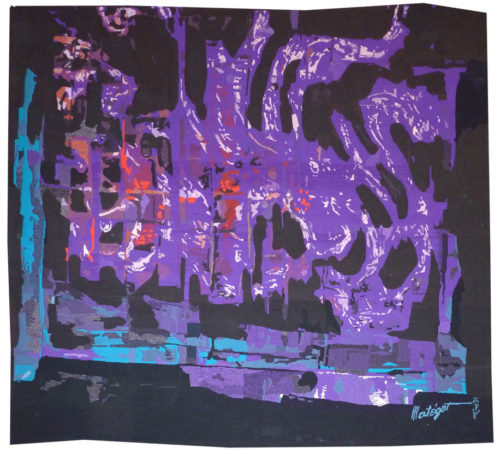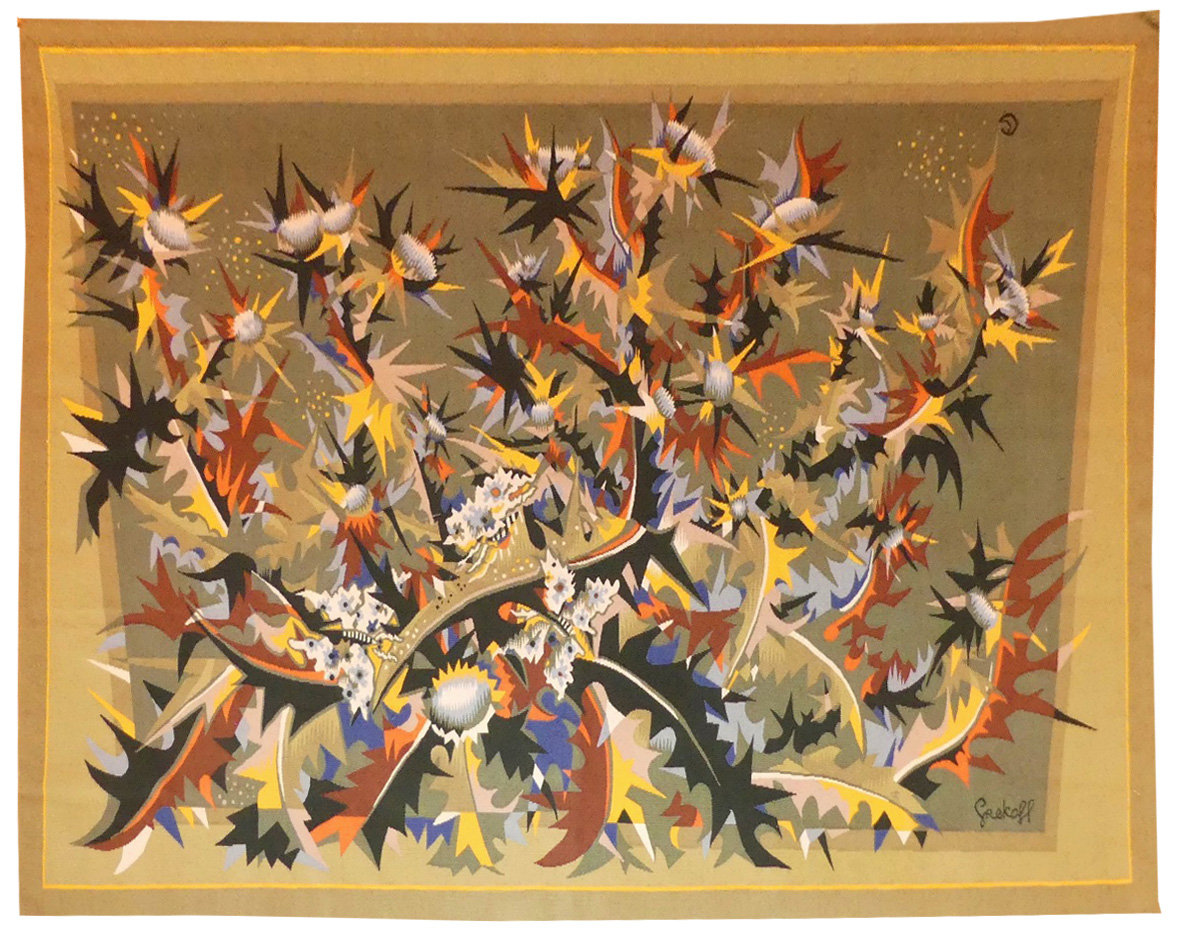-
Elie Grekoff, whose aesthetic is similar to that of Lurçat, designed over 300 cartons until the early 1980s. Here we find the sharp shapes typical of tapestry in the immediate post-war period. Note the motif which, amusingly enough, goes beyond the border-frame.Aubusson tapestry woven by the Caron workshop. With signed label, n°EA. Circa 1970.



